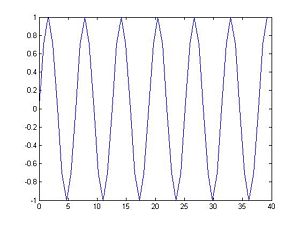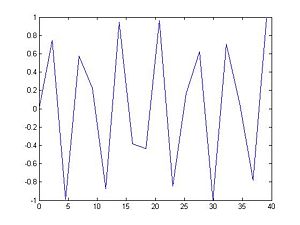| Line 4: | Line 4: | ||
== Getting periodic signal == | == Getting periodic signal == | ||
When you have that signal with a sampling rate at pi/4, you will see a periodic signal as shown in the picture on the left. | When you have that signal with a sampling rate at pi/4, you will see a periodic signal as shown in the picture on the left. | ||
| − | [[Image:Sinxwithpiover4sample_ECE301Fall2008mboutin.jpg | + | [[Image:Sinxwithpiover4sample_ECE301Fall2008mboutin.jpg|300x300px|function y with sampling rate at pi / 4]] |
== Getting non-periodic signal == | == Getting non-periodic signal == | ||
When you have that signal with a sampling rate at 2.3, you will see a non-periodic signal as shown in the picture on the right. | When you have that signal with a sampling rate at 2.3, you will see a non-periodic signal as shown in the picture on the right. | ||
| − | [[Image:Sinxwith2point3sample_ECE301Fall2008mboutin.jpg | + | [[Image:Sinxwith2point3sample_ECE301Fall2008mboutin.jpg|300x300px|function y with sampling rate at 2.3]] |
== Getting non-periodic signal == | == Getting non-periodic signal == | ||
Revision as of 07:56, 10 September 2008
Contents
Getting the signal -- No. 1
The signal that I've got was taken from my own solution: y = sin(x)
Getting periodic signal
When you have that signal with a sampling rate at pi/4, you will see a periodic signal as shown in the picture on the left.

Getting non-periodic signal
When you have that signal with a sampling rate at 2.3, you will see a non-periodic signal as shown in the picture on the right.


